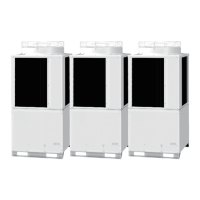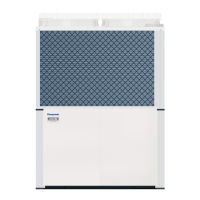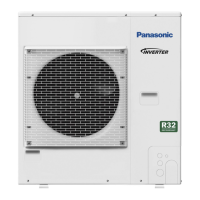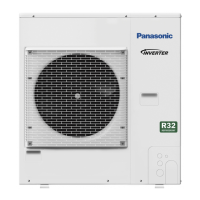Why is the outdoor unit fan on my Panasonic Air Conditioner still running after I turn it off with the remote?
- Jjulia73Sep 4, 2025
Fan rotating makes operation smoothly.

Why is the outdoor unit fan on my Panasonic Air Conditioner still running after I turn it off with the remote?
Fan rotating makes operation smoothly.
Why is the fan still running after I turn off my Panasonic Air Conditioner?
If your Panasonic Air Conditioner's fan continues to rotate even after it stops operating, this is normal. This function helps to ensure smooth operation. Also, the fan may sometimes rotate to dry the heat exchanger due to settings.
Why is my Panasonic U-18ME1E81 Air Conditioner discharging dust?
Dust accumulation inside the indoor unit is being discharged.
Why is there dewdrop on my Panasonic Air Conditioner?
Indoor moisture is cooled by cool wind and accumulated by dewdrop.
Why does the flap operate several times and stops at designated position when I change the wind direction on my Panasonic U-18ME1E81?
When the wind direction is changed, the flap operates after searching for a standard position.
Why won't the wind direction change on my Panasonic U-18ME1E81 Air Conditioner?
The wind direction on your Panasonic Air Conditioner may not change because when the air discharge temperature is low or during defrost operation, horizontal wind flow is made automatically. Also, the flap position may occasionally be set up individually.
Why does the fan on my Panasonic U-18ME1E81 Air Conditioner keep running after I turn it off?
The fan in your Panasonic Air Conditioner may continue to rotate after operation stops to ensure smooth operation or because it's drying the heat exchanger due to specific settings.
Why is my Panasonic U-18ME1E81 emitting fog?
If your Panasonic Air Conditioner is emitting fog, it could be due to a dirty heat exchanger inside the unit, requiring cleaning. Also, fog can appear during defrost operation. If the unit inside (heat exchanger) is dirty, consult your dealer as technical engineering is required.
Why does my Panasonic Air Conditioner smell?
Your Panasonic Air Conditioner might smell because indoor odor components like cigarette or cosmetic odors have accumulated and are being discharged. It could also be due to a dusty unit inside. In both cases, it is recommended to consult your dealer.
Why does my Panasonic Air Conditioner sound like water is running?
The sound of streaming water you hear is likely the sound of refrigerant liquid flowing inside the unit during or after operation or the sound of drainage water through the drain pipe.
| Brand | Panasonic |
|---|---|
| Model | U-18ME1E81 |
| Category | Air Conditioner |
| Language | English |
Symbol indicates hazard or unsafe practice leading to severe personal injury or death.
Symbol indicates hazard or unsafe practice leading to personal injury or property damage.
Avoid installation in hazardous areas like flammable gas zones or humid spaces.
Prevent outdoor unit corrosion by avoiding salty sea spray or sulphurous air.
Power mains must be turned on at least five hours before operation.
Disconnect mains plug when not in use for extended period.
Stop operation and disconnect power immediately if any failure occurs.
Appliance intended for use by expert or trained users only.
Avoid extreme temperature settings when babies or invalids are present.
Compressor may stop during thunderstorms but unit recovers automatically.
Contains R410A, a greenhouse gas. Do not vent into atmosphere.
Recommended operating temperature ranges for cooling and heating modes.
Instructions for proper disposal of old electrical equipment and batteries.
Identifies parts of the Y2 type 4-way cassette indoor unit.
Identifies parts of the K2 type wall mounted indoor unit.
Details optional wireless remote controller parts and functions.
Details operations of Start/Stop, Mode, Fan Speed, Swing, and Temperature buttons.
Enables operating multiple air conditioners in a single room.
Details on setting airflow direction, including swing and stopping operations.
Shows indicators for fan/heating and cooling/drying operations.
Y2 type has auto flaps; direction set via remote controller.
Covers automatic vertical and manual horizontal airflow adjustments for K2 type.
How to set airflow for multiple units using UNIT button and group control.
Illustrates unit selection sequences for group control with multiple units.
Explains DRY mode operation, fan speed, and limitations.
Discusses heating efficiency at low outdoor temperatures.
Explains frost/ice formation and the automatic defrosting system.
Explains the standby indicator during initial heating, defrosting, or low speed.
Turn off power before cleaning; do not pour water on indoor unit.
Avoid solvents; handle sharp parts with care.
How to clean the indoor unit's air intake and outlet sides.
Filter cleaning frequency and reset procedure.
Instructions for removing, washing, and closing the front panel.
Symptoms and causes for indoor unit issues like noise, odor, fog, dust.
Symptoms and causes for outdoor unit issues like no operation, noise, steam.
Troubleshooting common issues like no operation or poor performance.
Avoid blocking airflow, direct sunlight, and keep openings closed.
Keep air filters clean and openings closed for efficiency.
Unit resumes operation with previous settings after power interruption.
Conforms to Technical Regulation on Restriction of Hazardous Substances in Electrical and Electronic Equipment.
Technical specifications for K2 type wall-mounted air conditioners.
Technical specifications for Y2 type 4-way cassette air conditioners.
Technical specs for LE1 single-phase mini air conditioners.
Technical specs for LE1 3-phase mini air conditioners.
Technical specifications for ME1 type 2WAY air conditioners.
Technical specifications for MF1 type 3WAY air conditioners.
Technical specifications for MF2 type 3WAY air conditioners.
Lists model series names (4-Way Cassette, Wall Mounted, Mini, 2WAY, 3WAY) in English.
Lists model series names in French, Spanish, German, Italian, Dutch, Portuguese, Greek, Bulgarian.
Defines specification terms like Model Name, Power Source, Capacity in English.
Defines terms in French, Spanish, German, Italian, Dutch, Portuguese, Greek, Bulgarian.
Defines terms like Sound Pressure/Power Level, Dimensions, Net Weight in English.
Defines terms in Russian, Ukrainian, Indonesian.












